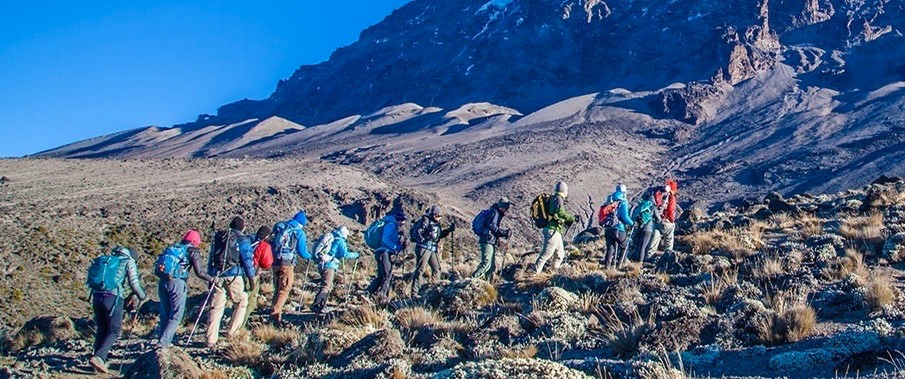Climbing Mount Kilimanjaro is a once-in-a-lifetime adventure that requires physical preparation, mental fortitude, and a sense of adventure. One of the common questions people have when planning their climb is, “How long does it take to climb Mount Kilimanjaro?” The answer to this question depends on a number of factors, including your physical fitness, the route you choose, and the pace at which you prefer to climb.
In this blog, we will delve into the various factors that influence the duration of a Mount Kilimanjaro climb and provide some general guidelines on how long it takes to reach the summit.
Whether you are an experienced mountaineer or a first-time climber, this information will help you plan your Mount Kilimanjaro adventure and set realistic expectations for your journey to the top of Africa’s highest peak.
Top 7 factors that influence the duration of a Mount Kilimanjaro climb
1. Route: The route you choose to take up the mountain will have a significant impact on the length of your climb. Some routes, such as the Marangu Route, are shorter and generally take 5-7 days to complete. Other routes, such as the Rongai Route, are longer and can take up to 8-9 days to complete.
2. Physical fitness: Your physical fitness level will also play a role in how long it takes you to climb Mount Kilimanjaro. If you are well-trained and in good physical condition, you may be able to complete the climb in a shorter amount of time. However, if you are less fit, it may take you longer to reach the summit.
3. Pace: The pace at which you prefer to climb will also impact the duration of your journey. Some climbers prefer to take a slower, more leisurely pace, while others prefer to move more quickly. It is important to find a pace that works for you and allows you to enjoy the climb while still making progress towards the summit.
4. Altitude: The high altitude of Mount Kilimanjaro can affect the length of your climb. The body needs time to acclimatize to the thin air and lower oxygen levels at high altitude, which can slow your progress up the mountain.
5. Weather: Inclement weather can also impact the duration of your climb. If you encounter heavy rain, snow, or strong winds, it may take you longer to reach the summit.
6. Physical challenges: Some climbers may experience physical challenges, such as altitude sickness, that can slow their progress on the mountain. It is important to listen to your body and take breaks as needed to allow for proper recovery.
7. Group dynamics: If you are climbing with a group, the group’s dynamic can also impact the length of the climb. It is important to work together as a team and support each other to ensure a successful and enjoyable journey to the summit.
In general, it takes most climbers between 5-9 days to reach the summit of Mount Kilimanjaro, depending on the route and the pace they choose. However, it is important to note that these are just general guidelines and the actual length of your climb may vary based on your individual circumstances.
It is important to plan your climb carefully, considering these factors and allowing for enough time to acclimatize and recover as needed. Additionally, it is a good idea to evaluate the emergency services offered by your tour operator, including medical evacuation and access to qualified medical professionals, in addition to purchasing travel insurance. These services can provide extra protection and peace of mind during your trekking.
For example, Shrike is a tour operator that offers such services, including partnering with the Flying Doctors, who are physicians that provide medical care and transportation via aircraft in East Africa. By considering these factors and being prepared for potential emergencies, you can help ensure a smooth and successful climb up Mount Kilimanjaro.










